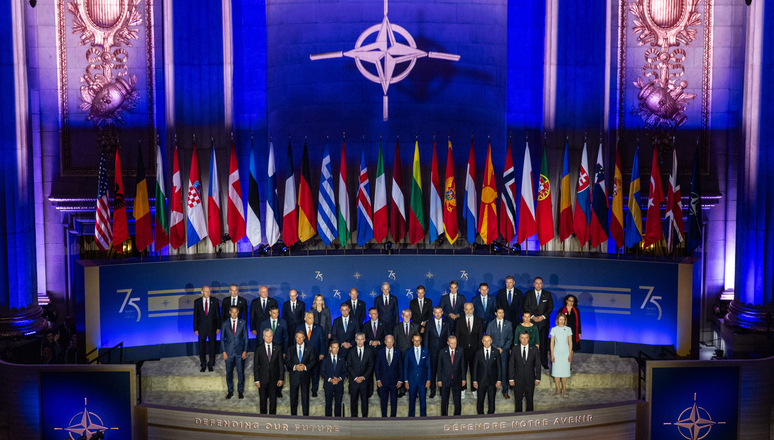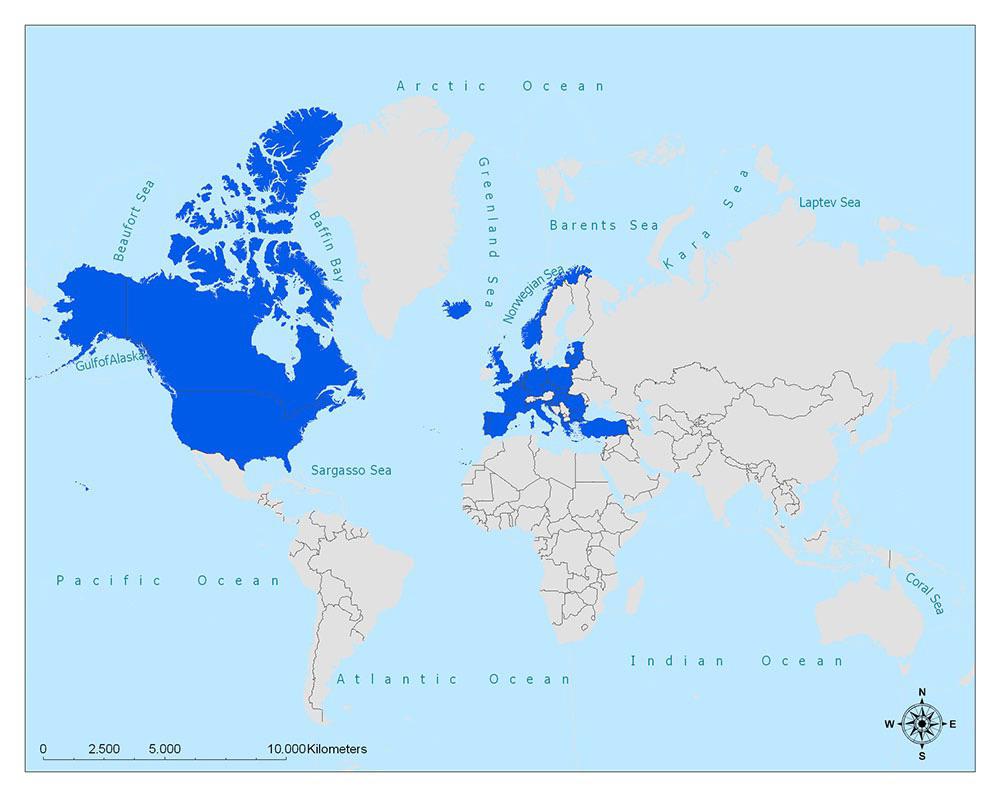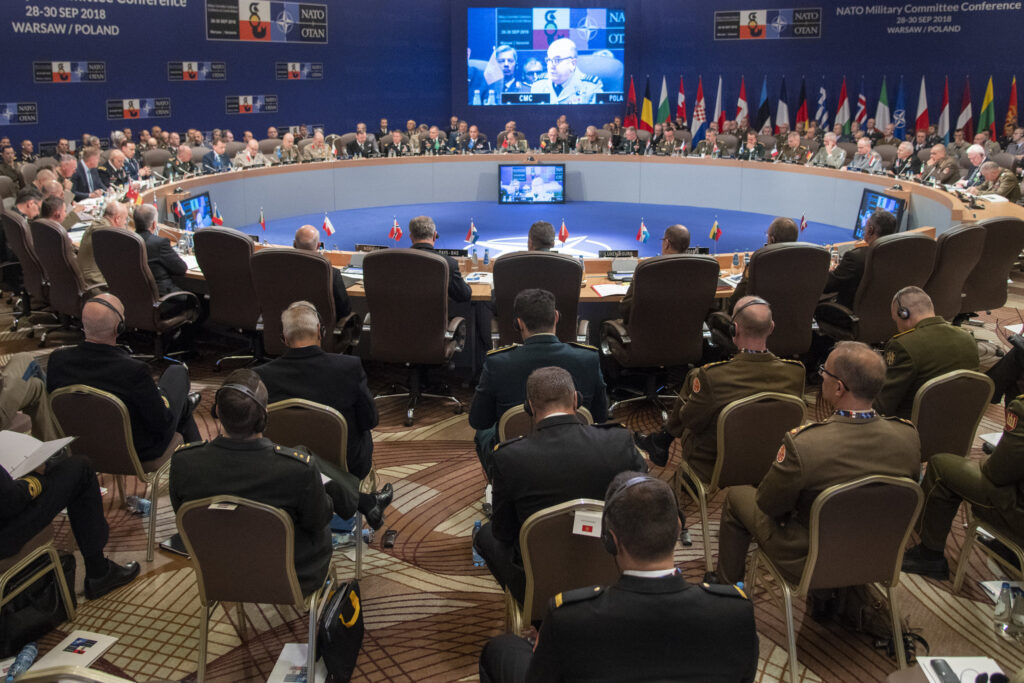
NATO’s Origin and Purpose
The North Atlantic Treaty Organization (NATO) was founded in 1949, following the devastation of World War II. The main objective behind its establishment was to maintain peace and security in a Europe still recovering from the horrors of the war. NATO Founding Principles were based on the idea of collective defense, meaning that an attack on one member is considered an attack on all, thus ensuring a robust deterrent against any aggressor. This collective defense mechanism has been the cornerstone of NATO’s strategic framework.
Initially, the founding members, 12 countries, committed to working together to protect democratic values, promote stability, and safeguard freedom. NATO Founding Principles continue to be the guiding force of the alliance. Moreover, NATO’s role has expanded beyond mere military defense; it actively seeks to ensure that all members uphold democracy, the rule of law, and human rights, which are considered essential for a secure and prosperous society.
Since its inception, NATO has adapted to meet new challenges, ranging from the Cold War to modern-day threats like cyberattacks and terrorism. Thus, the organization continuously strives to evolve in response to changing geopolitical dynamics, ensuring the protection of its members and the stability of the global order.
| Key Point | Description | Importance |
|---|---|---|
| Collective Defense | An attack on one is an attack on all. | Ensures mutual security. |
| Democratic Values | Promotes democracy and human rights. | Strengthens global cooperation. |
| Post-WWII Stability | Formed after WWII to prevent further conflict. | Provides a peacekeeping framework. |
| Military Cooperation | Standardized military strategies. | Enhances coordinated defense efforts. |
| Crisis Response | Focused on crisis management and peacekeeping. | Addresses global security threats. |
| Evolving Strategy | Continuously adapts to modern threats. | Maintains relevance in changing global contexts. |

NATO’s Expansion and Membership
From its modest beginnings with 12 founding nations, NATO has grown to encompass 32 member countries. This expansion signifies NATO’s increasing global influence and its ability to adapt to new geopolitical realities. The NATO Founding Principles remain central to the expansion process, with new members required to meet strict criteria: they must uphold democracy, human rights, and the rule of law. These values ensure that NATO’s mission to maintain peace and security continues to be grounded in the protection of democratic institutions.
As NATO expanded, its strategic importance grew. Each new member strengthens the collective defense system, making NATO not just a European alliance but a global security institution. Therefore, the principle that an attack on one member is an attack on all is reinforced with each new addition, as NATO’s reach extends to new regions. This expansion also ensures that NATO’s ability to deter potential aggressors and respond to global security challenges remains intact.
Furthermore, NATO Founding Principles are further emphasized as NATO continues to expand, and these principles guide the alliance’s development and future actions. NATO’s open-door policy allows for the continued growth of the alliance, and its expansion helps secure a stable, peaceful Europe and fosters international cooperation. Each new member brings unique contributions, whether in terms of military capabilities, strategic positioning, or geopolitical influence, further solidifying NATO’s role as the leading global security organization.
Here’s a table of NATO member countries and the years they joined:
| Country | Year Joined |
|---|---|
| United States | 1949 |
| Canada | 1949 |
| United Kingdom | 1949 |
| France | 1949 |
| Italy | 1949 |
| Belgium | 1949 |
| Netherlands | 1949 |
| Luxembourg | 1949 |
| Norway | 1949 |
| Denmark | 1949 |
| Portugal | 1949 |
| Iceland | 1949 |
| Greece | 1952 |
| Turkey | 1952 |
| West Germany | 1955 |
| Spain | 1982 |
| Czech Republic | 1999 |
| Hungary | 1999 |
| Poland | 1999 |
| Bulgaria | 2004 |
| Estonia | 2004 |
| Latvia | 2004 |
| Lithuania | 2004 |
| Romania | 2004 |
| Slovakia | 2004 |
| Slovenia | 2004 |
| Albania | 2009 |
| Croatia | 2009 |
| Montenegro | 2017 |
| North Macedonia | 2020 |
| Key Point | Description | Importance |
|---|---|---|
| NATO’s Growth | Expanded from 12 to 32 members. | Increases global influence. |
| Membership Criteria | Uphold democracy, human rights, and rule of law. | Ensures democratic alignment. |
| Strengthening Europe | New members enhance Europe’s stability. | Contributes to regional security. |
| Collective Defense | An attack on one is an attack on all. | Bolsters mutual defense capabilities. |
| Diplomatic Strategy | Ties with neighboring countries and organizations. | Enhances international cooperation. |
| Global Influence | NATO’s expanding reach supports peacekeeping. | Improves NATO’s global presence. |

Partnerships and Global Cooperation
NATO’s effectiveness is not just limited to its member countries. In fact, the organization actively engages in partnerships with non-member nations and works alongside international organizations such as the European Union (EU) and the United Nations (UN). These partnerships enable NATO to address a wide range of global security threats, including terrorism, cyberattacks, climate change, and nuclear proliferation.
Through joint military exercises, intelligence sharing, and crisis management, NATO has built a global network of cooperation. Consequently, these collaborations allow NATO to tackle complex international challenges, from regional conflicts to global concerns like climate change and energy security. The alliance’s partnerships ensure that NATO’s actions are in line with international law and global security norms.
The NATO Founding Principles continue to play a crucial role in guiding these partnerships. By working with non-member countries, NATO not only extends its influence but also helps build a more secure world. Thus, the ability to work in tandem with global institutions enhances NATO’s capability to address multifaceted security issues, making it a central player in peacekeeping, crisis management, and conflict resolution.
| Key Point | Description | Importance |
|---|---|---|
| Global Partnerships | Works with non-member countries and organizations. | Enhances global security. |
| Intelligence Sharing | Cooperates in intelligence and information exchange. | Improves crisis management. |
| Military Exercises | Joint operations and training with partners. | Strengthens defense capabilities. |
| Crisis Management | Addresses global issues like terrorism and cyber threats. | Fosters international stability. |
| Environmental Focus | Tackles climate change as a security issue. | Prepares for emerging global threats. |
| Leading Global Security | A key player in global peacekeeping and conflict resolution. | Promotes worldwide stability. |
Decision-Making and Structure
NATO’s decision-making process is based on consensus, meaning that all members must agree before a decision is made. This structure ensures that every member’s voice is heard and that all actions taken align with NATO Founding Principles. While NATO does not have a standing army, its members contribute forces and resources as needed, allowing for a flexible and dynamic response to various security challenges.
The North Atlantic Council (NAC) is NATO’s principal decision-making body, where representatives from each member country gather to discuss and decide on the alliance’s actions. As a result, this consensus-based approach ensures that NATO’s military operations are carried out in a unified and coordinated manner, even though each member country contributes its own resources.
NATO’s standardized military operations allow member states to work together seamlessly, ensuring that the alliance remains a formidable force in global security. These standardized procedures, along with shared resources and collective decision-making, ensure that NATO continues to operate effectively and efficiently.
| Key Point | Description | Importance |
|---|---|---|
| Consensus Decision-Making | Decisions made by consensus in the North Atlantic Council. | Ensures inclusivity and unity. |
| No Standing Army | Member states contribute forces and resources. | Allows for flexible responses. |
| Standardized Operations | Ensures effective military cooperation. | Enhances operational efficiency. |
| Resource Sharing | Members contribute based on capabilities. | Maximizes NATO’s military strength. |
| Coordinated Strategy | Unified action based on collective decisions. | Ensures cohesive defense efforts. |
| Strategic Flexibility | Adaptable to changing global security dynamics. | Enhances NATO’s responsiveness. |
Funding and Contributions
NATO’s funding is shared among its member countries, with contributions determined based on each nation’s Gross National Income (GNI). This funding model ensures that NATO remains financially sustainable while maintaining its global presence. Joint investments in defense technology, cybersecurity, and security initiatives are made collectively to strengthen the alliance’s capabilities.
NATO Founding Principles are further reflected in its shared funding model, where each member contributes in proportion to its resources. Therefore, this ensures fairness and equality in NATO’s defense initiatives, as all members play their part in sustaining the alliance’s strength. NATO’s defense spending is not only focused on military resources but also includes investments in research, technology, and infrastructure. By pooling financial resources, NATO ensures that its members can maintain the highest standards of defense technology and readiness, helping to deter any potential threats to the alliance.
These joint contributions not only enhance NATO’s defense capabilities but also foster a sense of shared responsibility among its members. Each country’s financial commitment reinforces the collective defense principle, ensuring that NATO remains strong and prepared to face any emerging threats.
You Might Also Like
- What Is BRICS and How Could It Challenge the US Dollar?
- Fears of Trump: India Reduces Taxes on Harley-Davidson Bikes
- India-Russia Nuclear Energy Cooperation: Volodin’s Key Visit
| Key Point | Description | Importance |
|---|---|---|
| Shared Funding | Contributions based on Gross National Income. | Ensures fair and equitable financing. |
| Joint Investments | Funding for defense technology and initiatives. | Strengthens NATO’s capabilities. |
| Defense Technology | Joint investment in advanced military systems. | Enhances NATO’s operational readiness. |
| Cybersecurity Initiatives | Investments in cybersecurity and digital defense. | Secures NATO’s infrastructure. |
| Pooling Resources | Countries share military and financial resources. | Maximizes collective strength. |
| Sustainable Financing | Ensures financial sustainability for long-term goals. | Maintains NATO’s global presence. |



